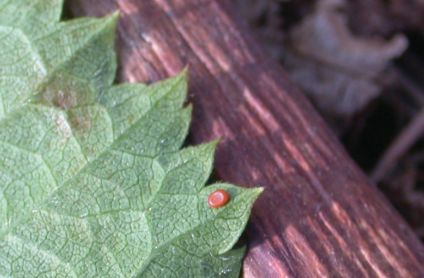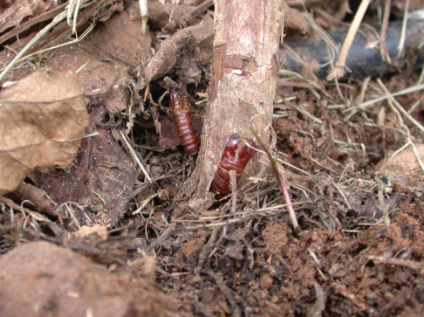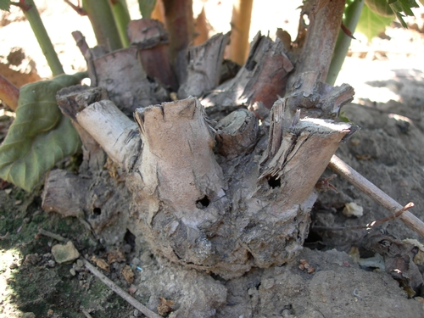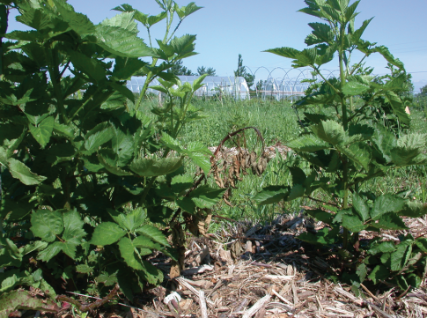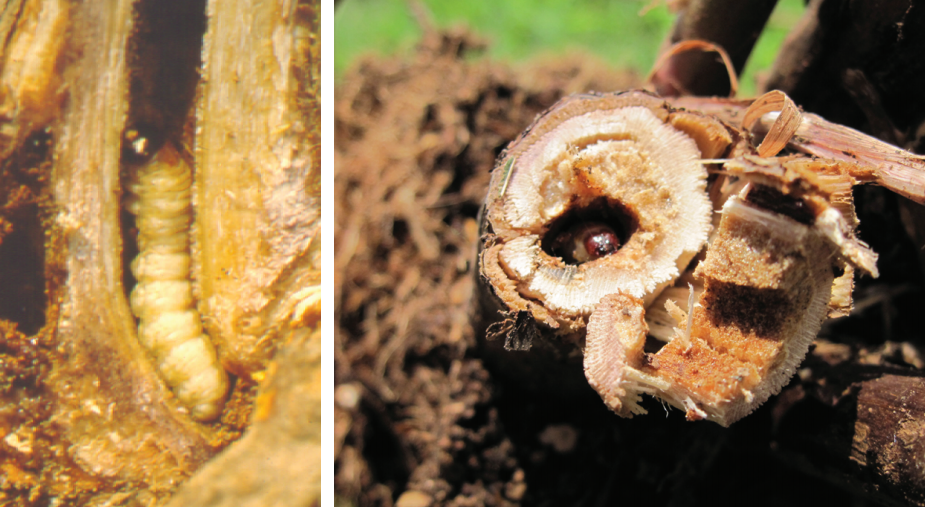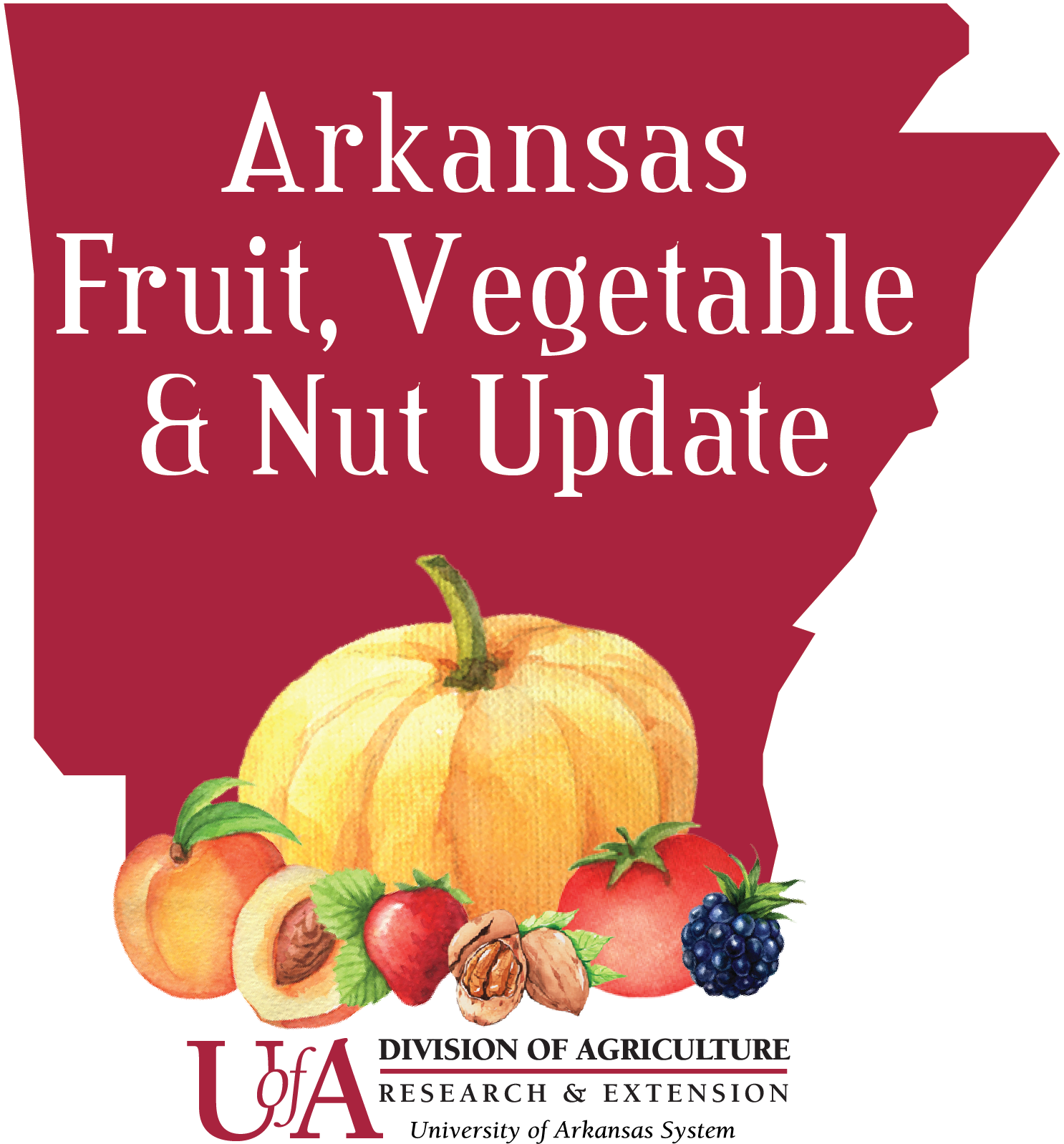
Fall Management of Raspberry Crown Borer
The leaves are falling, the days are growing shorter, and Raspberry Crown Borer should be on all of our minds! Here are some recommendations for scouting and control.
Now that it is officially fall we need to remember to focus our scouting efforts on what is generally our most serious insect pest of blackberry, the raspberry crown borer, Pennisetia marginata. Most growers around the state are familiar with this pest and the damage it can cause, but many still don’t scout for signs of damage or presence before using control measures. It’s possible that some money and time could be saved in holding off control if the pest isn’t present.
Biology
Raspberry crown borer has 1 generation per year in Arkansas. Adult moths are clearwing moths that exhibit yellow and black coloration, similar to a wasp. Adult moths emerge from pupal cases in early September-October, mate in around 7 days, then begin to lay eggs. Eggs are laid on the underside of blackberry leaves, right around the margin. These eggs are oval in shape and have a dark copper appearance (Figure 1). Larvae hatch from eggs around a month later, depending on temperature, then move down the cane to bore into the cambium just below the soil. Larvae will overwinter in this area until early spring. Larvae will then bore in to the crown and up canes where they will feed and complete their larval life cycle (Figure 2). Mature Larvae emerge in late summer through exit holes at the base of canes and pupate (Figure 3 and 4).
Damage
Larval boring and feeding can completely cut off nutrients and water to canes which can result in no production and death of that cane. This is generally identified by a shepherd hooks appearance of the cane, which can be confirmed by cutting open the bottom of the cane and looking for presence of a larvae or insect excrement (Figure 2 and 5).
Sampling
- After harvest when floricanes are being pruned out, inspect primocanes for a wilted shepherd hooks appearance, and cut open canes to look for larvae if it is still July-August (Figure 2 and 5).
- Late September-Early October scouting should target presence of exit holes and pupal skins at the crown of plants (Figure 3 and 4).
- Scout for eggs on the underside of leaves through October. It’s important to note when you first start seeing them (Figure 1).
Cultural Control
- Remove all wild brambles from nearby areas. These can harbor raspberry crown borer that will emerge and move on to your plantings.
- Remove infested primocanes during summer floricane pruning. Remove the entire plant if many canes are suspected to be infested with raspberry crown borer.
Chemical Control
Chemical control should occur from late October – Early November, with exact timing based on observations that have occurred since harvest. Research by Dr. Donn Johnson has found that an application of Brigade (Pyrethroid) or Altacor (Diamide) in the first week of November will provide excellent control. This application should be applied as a soil drench in a 50-100 gal/acre solution. The goal is to get the product to the area that the larvae is trying to overwinter, where it will have great residual control in the soil around the base of canes. Control of this pest is less feasible once it bores into the crown and cane.
Information and most photos for this article are courtesy of Dr. Donn Johnson. Please see the fact sheet created by Dr. Johnson for more specific information and recommendations.
Check out the Arkansas Small Fruits Management Schedule and Southeastern Regional Caneberry Integrated Management Guide for more information and reccomendations.
